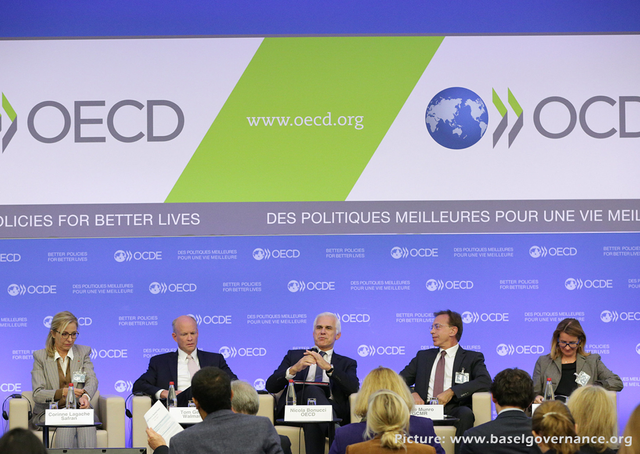Who Benefits The Most from the Global Tax Consensus?
Asep Munazat Zatnika
|
Friday, 31 December 2021

Like a cake served on the table, that is the essence of the two pillars of the global tax consensus for a developing country like Indonesia. Pillar 1 is like the first piece of cake, which gives taxing rights for developing countries on the revenue of multinational companies. While the second pillar is an additional tax that is likely to be enjoyed by rich countries.
After repeated deadlocks, the two global consensuses were finally agreed upon by the OECD/G20 inclusive framework member countries in the autumn of 2021, on October 8 to be exact. A high-level agreement that is believed to change the direction of world taxation policy.
In accordance with the title "The Two-Pillar Solution to Address the Tax Challenges Arising from the Digitalization of the Economy", this global consensus is expected to be a common solution in facing the increasingly dynamic tax challenges in the digital economy era.
Pillar 1: Taxing Rights
There are four points of global agreement in Pillar 1.
First, the taxing rights for the jurisdiction or source country or marketing location. In this case, every multinational company that has a global revenue of more than 20 billion euros must reallocate more than 25% of its profits to be distributed to the jurisdiction where its customers or service users are located.
Second, increasing tax certainty through mandatory and binding dispute resolution with an elective regime to accommodate low-capacity countries.
Third, the abolition and termination of Digital Services Taxes (DST) and other relevant taxes.
Fourth, the simplification of the rules for applying the arm's length principle in certain circumstances, especially focusing on low-capacity countries.
Pillar 2: Global Minimum Tax
Then in Pillar 2, some key points were agreed upon by G20 and OECD countries.
First, issuing the Global Anti-Base Erosion (GloBE) regulation which requires the application of corporate income tax (CIT) with a minimum rate of 15%. The minimum tax targets all multinational companies with a revenue of more than €750 million a year.
Second, requiring all jurisdictions—where the CIT rate on interest, royalties, and other payments is less than 9%—to be subject to tax rule. To avoid any misuse, the compliance must be outlined in bilateral agreements with developing countries that are members of the Inclusive Framework.
Third, accommodating tax incentives only for substantial business activities.
Questioning the Tax Portion
Pillar 1 is like ammunition for market countries to vigorously pursue their share of taxes that have been lost among the global regulatory loopholes.
Pillar 2 is like a bulletproof vest for rich countries like the United States, to protect multinationals from the tax hunting of developing countries.
If the war analogy is too cruel, maybe we can use the parable of the “piece of cake” at the beginning of the article as an illustration of the 2 pillars of global consensus.
Ideally, the cake is cut the same size to give equal enjoyment and benefit to all parties. In this case the producing or rich countries and market countries.
But what happens is, the global consensus is like a cake that is deliberately made to produce asymmetrical slices. If we look closely, pillar 2 has a greater impact on rich countries in the context of global taxation than it does on market countries.

Pillar 1, for example, was made to accommodate the aspirations of developing countries that demand taxation rights for multinational companies that make big profits in their markets.
Taxing rights are then given to market countries, which can only target multinational companies with global revenue of more than 20 billion euros. The first slice of cake was given to developing countries. Congratulations!
However, developed countries which have enjoyed the greatest taxing rights do not seem to be sincere if developing countries eat up their share of the cake. To that end, Pillar 2 was then initiated, related to the application of a tax with a minimum rate of 15% on the income of companies with revenue of more than 750 million euros a year.
At first glance, the two pillars seem to set two different things. But if we want to take a closer look, the difference in the threshold will determine who will ultimately get the largest portion of this global tax consensus.
Simply put, which one is more numerous in the world: multinational corporations with a turnover of more than 20 billion euros or more than 750 million euros a year? For developing countries, please count how many giant multinationals can be taxed.
Even the International Monetary Fund (IMF) in its report "Digitalization and Taxation in Asia" said that not many multinationals in Indonesia entered the threshold of 20 billion euros.
In the end, again and again, it is the developed countries that are likely to enjoy the most the taxing rights with the existence of Pillar 2.
In addition, with the enactment of Pillar 2, developing countries including Indonesia can no longer provide tax relief incentives, which if the average tax rate is lower than 15%. Especially if it is tax exempt.
If a multinational company receives a tax relief or exemption facility by a jurisdiction, its parent company is required to pay a tax of a difference of 15% of its market jurisdiction.
This is because the GLOBE provisions that apply in Pillar 2 regulate the Subject to Tax Rule (STTR), Income Inclusion Rule (IIR), and Undertaxed Payment Rule (UTPR).
STTR is a provision that allows the origin country to impose taxes on multinationals on the difference in taxes of subsidiaries (intragroup companies) that get relief or are not taxed or a minimum of 9%.
The implementation of STTR is carried out through a tax treaty (P3B) between member countries of the inclusive framework that has low taxes or provides tax relief facilities.
While IIR is a provision that requires the parent of a business group (ultimate parent entity) to pay an additional tax (top-up tax) to the jurisdiction of the origin country.
Then, UTPR confirms that the fees paid by multinationals in the country of domicile to its affiliates in the market country with an effective tax rate below 15% become non-deductible.
In contrast to UTPR, IIR can be implemented only by making domestic policies. The scheme is likely to be carried out by developed countries if there are intragroup companies that get tax facilities below 15%.
However, if developed countries find it difficult to collect additional taxes through the IIR scheme because the country that provides tax facilities does not adopt the IIR policy, they can apply UTPR. As with IIR, UTPR can also apply only by making domestic policies.
Hence, behind the potential for additional tax revenues, the existence of the 2nd pillar can also be a powerful weapon to hit the business climate of countries that are very dependent on investment.
After all, especially for developing countries, tax relief and tax facilities are still important aspects in attracting investors. So, roughly speaking, who benefits the most from the global tax consensus?
(Asep Munazat Zatnika, Researcher MUC Tax Research Institute)
*This article was published in Kumparan.com on 27 December 2021
Kumparan.comDisclaimer! This article is a personal opinion and does not reflect the policies of the institution where the author works.


